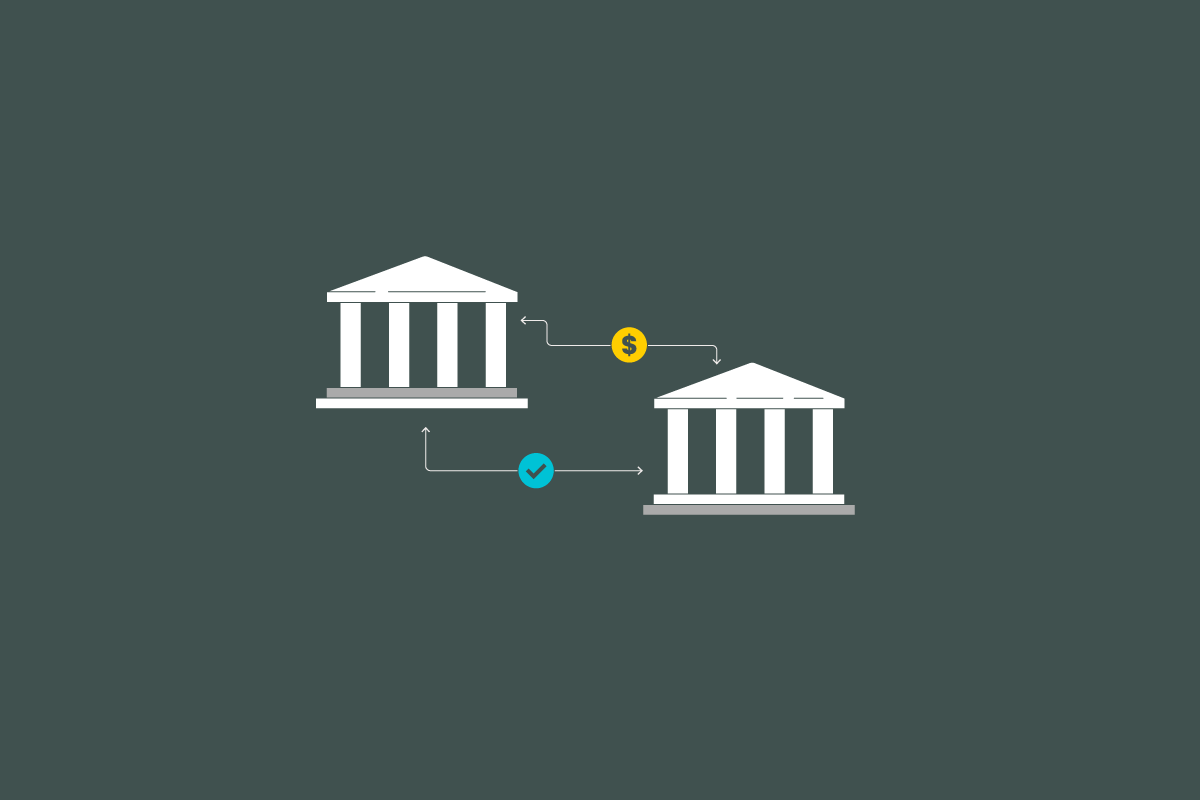Blog
What are account-to-account (A2A) payments? Here's what merchants need to know
March 2, 2023
Editorial Team

Account-to-account payments, also known as A2A payments, are a type of payment where funds are transferred from one bank account to another. They are widely used in many markets as a viable alternative to card and wallet payments, and have a number of compelling advantages both for merchants and consumers alike.
However, there are a wide range of existing A2A payment methods, and they come with a number of pros and cons. To help merchants understand the landscape and what to look for, in this post we will discuss:
The differences between A2A payments and card payments.
The key use cases for A2A payments.
Some common A2A consumer-to-business payment methods in use today.
Open banking as a new type of A2A payment method that merchants should consider.
Defining A2A payments and how they are different
The key defining characteristic of an A2A payment is that it is a direct transfer of funds between two accounts. This is critical for two reasons.
First, it means that A2A payments do not run on the credit card networks. Therefore, they are not hostage to many of the swipe fees that make credit card transactions so expensive to process, leading to significantly lower-cost transactions.

And second, there is no card involved, and therefore no need for someone making a purchase to enter card details. Since bank accounts never expire or get lost, this means a lower chance of payment failure.
Use cases of A2A payments
For the purpose of this article, the A2A payment use case we are most interested in is Consumer-to-Business (C2B). This is money sent from an individual to a merchant or service provider for a purchase. It can be as push payments, which are one-off transactions that requires the payer to send, or push, funds into the merchant or service provider’s bank account, or as pull payments, when a merchant or service provider withdraws, or pulls, money from a consumer’s account, for purchases such as subscriptions or other kinds of recurring payments.
Besides this use case, there are a number of other A2A payment use cases that are worth briefly mentioning.
Peer-to-Peer: money sent between the bank accounts of two individuals, such as friends or family.
Business-to-Consumer: money sent from a business to an individual, such as wages or refunds.
Business-to-Business: money sent between accounts of separate business entities, typically for products and services.
Me-to-Me: money sent between the bank accounts of the same individual or business entity, typically in different financial institutions.
Consumer-to-business A2A payment methods
There are a large and growing number of A2A payment methods in use around the world. In some cases, these are the dominant consumer-to-business payment method in the market, as is the case with iDEAL in the Netherlands. Also in Europe, giropay in Germany, MyBank in Italy, and eps-Überweisung in Austria are recognized and widely used A2A consumer-to-business payment methods for their domestic markets.
But globally speaking, the dominant A2A payment method in use today is direct debit. A direct debit is an instruction from a customer to their bank to your bank, to authorize the merchant they want to pay to collect varying amounts from their account. They are commonly used to pay recurring variable bills and/or usage-based bills such as electricity, gas, internet, mortgages, tax, insurance, and so on, in countries all over the world.
In the US, there are several consumer-to-business A2A payment methods in use today. But for the purposes of this post, we will look at two; ACH Direct Debit, and open banking.
ACH Direct Debit
ACH Direct Debit is a direct debit payment method that leverages the ACH (Automated Clearing House) network in the United States to electronically move funds between the accounts.
Like other A2A payment methods, ACH Direct Debit is secure, low-cost, and reliable. Unfortunately, the traditional consumer experience of ACH payments involves a degree of friction, since they need to manually enter account and routing numbers, which is complicated and can negatively affect conversion. In spite of its strengths, this friction at the checkout means it is not ideal for e-commerce, where a seamless experience is key to driving up conversion rates. But if this one issue of friction could be solved, ACH offers a very strong alternative to other payment methods, which leads us to the next option — open banking payments.
Open banking payments
Open banking payments are a new type of online payment method that are becoming popular in Europe and other parts of the world.
Like ACH payments, they run over the ACH network. But there are several important differences, too. Open banking payments are initiated by the customer in their own bank app, meaning it is far easier, more secure, and more convenient, leading to a higher conversion rate.
The key issue around open banking payments currently is that they are not yet well-known by merchants, and therefore not well-known by customers. But that is a situation that can change rapidly — look at how quickly BNPL has come to prominence over the past few years.
Open banking-powered A2A payments can accelerate your growth
Open banking payments can be a growth lever for merchants in a number of ways. Card fees typically cost 2.87% to 4.35% of each and every transaction that you make in the US — a hefty, and unnecessary, cost of doing business. And on top of that, if you do high volumes of payments, you may also invest in fraud management solutions, driving the cost of doing business higher still.
Up until now, A2A payment methods have been of limited value to many merchants in spite of their low costs, due to a sub-optimal customer experience and other issues. But driven by open banking innovation, the technology is now making great strides around convenience and speed. Your business can benefit from open banking-powered A2A payments due to a compelling combination of cost, low fraud, and superior customer experience.
To find out more about A2A open banking payments, contact us using the form below.